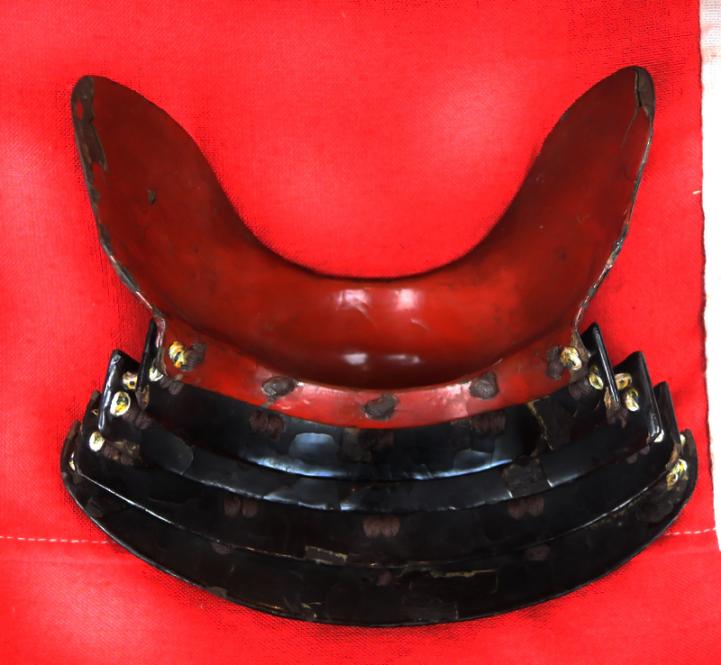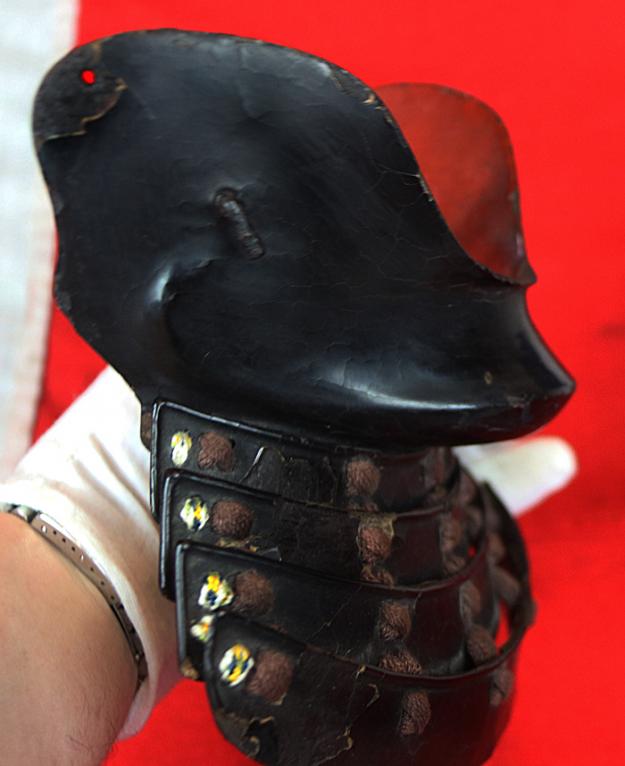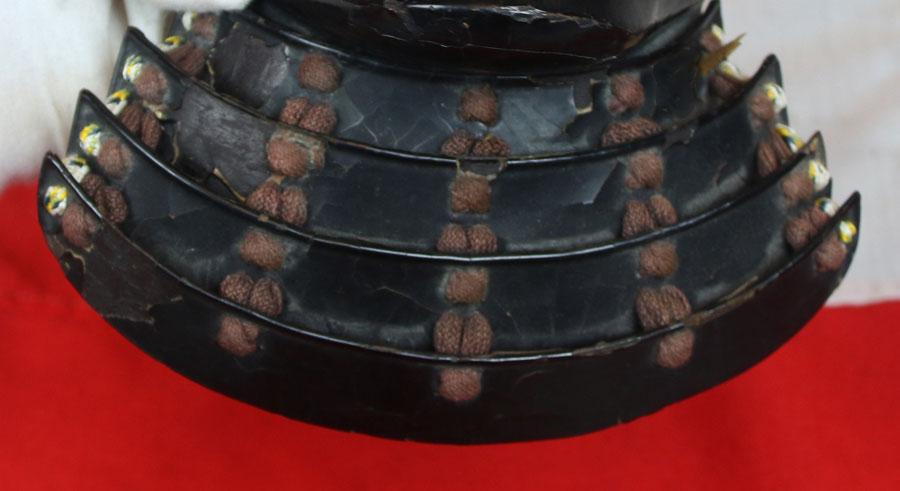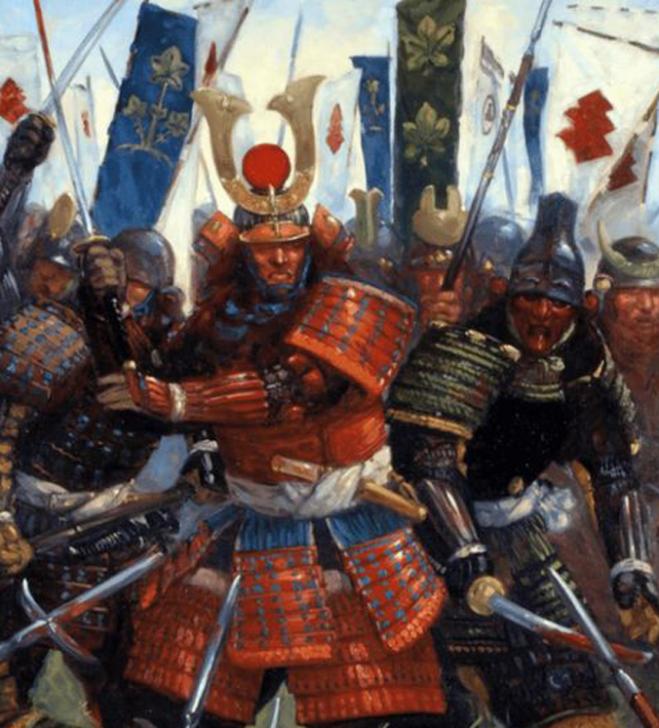A Beautiful, Edo Period, 18th century Hanbo, A Samurai Warrior's Face Armour Mask
Black lacquer decor throughout, with vermillion lacquer interior. The expression is fierce/noble with protruding chin, the shape is elegant and very well refined. three lame yodarekake, with hooked standing cord pegs. Face armour, of this type is called hanbo.
They were worn with the Samurai's armours to serve as a protection for the head and the face from sword cuts. There are 4 types of face armour mask designs that came into general use in Japan: happuri (which covers the forehead and cheeks), hanbō (covers the lower face, from below the nose all the way to the chin), sōmen (covers the entire face) and the me-no-shita-men (covers the face from nose to chin). We can also classify those mask depending on their facial expressions, most of which derive from the theatre masks. It has an asenagashino ana a hole under the chin to drain off perspiration and orikugi two projecting studs above the chin to provide a secure fastening to the wearer. In the 16th century Japan began trading with Europe during what would become known as the Nanban trade. Samurai acquired European armour including the cuirass and comb morion which they modified and combined with domestic armour as it provided better protection from the newly introduced matchlock muskets known as Tanegashima. The introduction of the tanegashima by the Portuguese in 1543 changed the nature of warfare in Japan causing the Japanese armour makers to change the design of their armours from the centuries old lamellar armours to plate armour constructed from iron and steel plates which was called tosei gusoku (new armours). Bullet resistant armours were developed called tameshi gusoku or (bullet tested) allowing samurai to continue wearing their armour despite the use of firearms.
The era of warfare called the Sengoku period ended around 1600, Japan was united and entered a relatively peaceful Edo period. However, the Shoguns of the Tokugawa period were most adept at encouraging clan rivalries and conflicts and battles were engaged throughout the empire. This of course suited the Shogun very well, while all his subordinate daimyo fought each other they were unlikely to conspire against him. Samurai use continued to use both plate and lamellar armour as a symbol of their status but traditional armours were no longer necessary for war, but still for battle. The face armour was not designed to have any nose protection fitted, the lacquer is original Edo period throughout with vermilion red lacquer in the interior face portion, the exterior lacquer has a fair amount of age flaking over around 6-8% of the neck defence lames.
Code: 23686
1125.00 GBP









